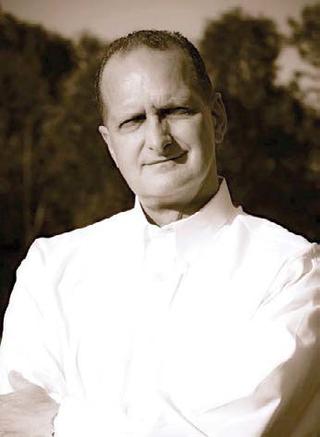AXF Strives for Industry Acceptance
SEATTLE—After years of work, with some interruptions, SMPTE’s Archive eXchange Format standard was published in September 2014. A year later, the scoreboard shows some archive vendors going with AXF, with others remaining with the IT-based standard, linear-tape file system.

Alex Grossman
In developing AXF, members of the working group wanted to solve specific challenges from the entertainment industry, such as allowing the massive files expected from 8K video projects to span several pieces of storage media. Object-based file capability is also included, allowing the grouping of a number of related files—video, audio, scripts, budgets, etc—together in an AXF file. Technical information about codecs can be included, so someone accessing an AXF file a century or more in the future won’t wonder what the heck MPEG was.
OUT OF THE GATE
First to deploy AXF was Front Porch Digital, which was acquired by Oracle in September 2014, around the time that the standard was published (see “SMPTE Publishes AXF Standard,” p. 1, Oct. 15, 2014). Front Porch was on the AXF Working Group when it began developing the standard in 2006, and when work by that committee lapsed a few years later, the company continued development on AXF with an eye to the original objectives.
The company announced at the 2011 NAB Show that it had completed its work on AXF, according to Brian Campanotti, director of business development at Oracle Digital Media Solutions (formerly Front Porch). “We openly contributed the intellectual property back to the SMPTE AXF working group as a ‘straw man’ proposal,” he said. The SMPTE committee worked forward from there until the standard was published this year.
Front Porch started selling AXF archiving systems, dubbed version “0.9,” in 2011, three years ahead of SMPTE’s publication of the standard. Oracle Digital Media Solutions has more than 100 customers running AXF, and Campanotti noted there’s no need for an immediate wholesale migration of LTO tapes written in version 0.9 to the SMPTE standard, version 1.0. “When they are moving from, say, LTO3 or 4 to LTO5 or 6, we can help them migrate from our legacy format to AXF 0.9, and to SMPTE’s AXF 1.0 in exactly the same fashion,” he said.
Campanotti reports that the new owner, Oracle, is embracing AXF and sees it as an important technology. “In our new world of Oracle, I’ve discussed this with some of the Oracle teams that are working with justice and public safety, police services, national police forces, CCTV and surveillance type opportunities,” he said. “AXF actually brings a lot of capabilities to those markets that are just not available today, things like chain of custody and integrity of the assets as they’re transferred around.”
Get the TV Tech Newsletter
The professional video industry's #1 source for news, trends and product and tech information. Sign up below.
Another archive system vendor embracing AXF is Tedial, a Spanish-based provider of media asset management software. “When AXF was accepted as a specification, we modified our hierarchical storage management software so it will support AXF as well,” said Jay Batista, general manager of Tedial’s U.S. operations. “We adopt SMPTE standards and support all the open IT standards. Tedial is going to support the AXF spec because SMPTE selected it, regardless of the politics. We’re going to support it because that’s what the industry has decided they want. We believe it’s the best way to make a product future-proof.”
Batista said Tedial has a close relationship with Front Porch, which has continued since the company’s acquisition. “Frankly we’re even closer now because we use Oracle as the basis for our product,” he said. “So the relationship with Oracle has gotten better because of this, and we’re going to continue to support it. They’re a partner, and we see it as the best way to future-proof installations going forward.”

Jay Batista
PREFERS LTFS
Quantum, a developer of storage, archiving and data protection systems, isn’t ready to employ the AXF protocol in its systems, at least not yet. “There’s a standard already out there for the tape side called LTFS, and that standard is a lot less what I would call ‘difficult,’ for people now and in the future, to get their heads around than is AXF,” said Alex Grossman, vice president for media and entertainment for the San Jose, Calif.-based company.
Grossman emphasizes that they’re not dissing AXF outright. “We’ve looked at it, and eventually we may adopt it if it becomes a little less onerous to be able to do so,” he said. “But right now, for you to adopt it properly, it requires a lot of work from a lot of people, including the people who build the applications.”
Grossman pointed out that LTFS, developed by IBM decades ago, is well accepted throughout the IT storage industry, and that it has many of the capabilities of AXF. Just recently they added the ability to span a single large file over several pieces of storage media. “And LTFS and AXF tapes both have labels, they both have identifiers as to what type of media it is, they both have information about the object,” he said.
British archive vendor SGL is not ready to move to AXF either. “We’re not looking at that [AXF] as a strategic advantage at the moment,” said Chris Luther, director of professional services-Americas for SGL. “With LTFS, there’s no software required. Somebody, at some point, is going to have to write an AXF reader, something that can take an AXF file and decompose it to its constituent parts. That software doesn’t exist.”
By contrast, he said, “Right now, I can go to CDW and buy an HP standalone tape drive, go to HP’s Website and download the drivers, and be able to read an LTFS tape.”
Though LTFS has been a published standard in recent years, Luther said it’s been the defacto specification since IBM wrote it 30-plus years ago. “The appeal was that it was already supported by multiple vendors,” he said. “Quantum, HP and IBM, the main manufacturers of the drives, all agreed to support that specification in their software. So it immediately became an across-the-board specification. The whole Ultrium consortium got behind LTFS at the very beginning, and it’s not just a specification for broadcasting, it’s used in general IT.”
Xendata, a Walnut Creek, Calif.-based provider of digital archiving systems, is also taking a wait-and-see approach toward AXF. “Yes it’s a SMPTE standard, and the problem is that it isn’t very widely adopted,” said Xendata CEO Phil Stoney. “From our perspective, we have not done any work at all in terms of supporting AXF.”
He said the ability to swap AXF linear tape cartridges between different archive systems will only come with more vendors supporting AXF, and more customers paying for such systems. “You could write AXF effectively as files on top of a file system,” Stoney said. “And we absolutely support that, because we support any file type written to LTO. But if you want to move from one manufacturer to another on a big archive, unless you find someone who also is supporting AXF at the block level, then you have to convert and copy all of the content out of your big archives, and copy it to the new archives. That idea has a serious limitation of AXF, in spite of all of the marketing hype.”

Merrill Weiss
APPLES AND ORANGES
Merrill Weiss, chair of the SMPTE Working Group on AXF, said that the capabilities that the two protocols support are different, and are for different purposes. “AXF does not do what LTFS does for linear tape, and LTFS doesn’t have the range of applications AXF does,” he said.
Weiss pointed out that LTFS was designed as a file system, to allow the user to lay down files on LTO tape cartridges, one after another, and then find them again. “AXF is not oriented towards media, it’s oriented towards content,” he said. “It’s intended to work with any kind of medium, anything that existed in the past, exists now, or will exist in the future. The real purpose of AXF is to group together one to an unlimited number of files, of unlimited types, and associated metadata into an AXF Object. An AXF Object can be treated as a single entity that maintains relationships between the files, folders and symbolic links, while isolating its contents from operating systems, file systems, and other infrastructure that may change over time. An AXF Object then can be stored or communicated in the same way as a single file. It assures that all elements that are intended to be part of an AXF Object are treated together.”
One point of misunderstanding that Weiss noted has to do with the ability of AXF to store actual application codecs along with archived content. It’s not a requirement at all, although AXF certainly is capable of storing a file with such information. If the time between when material is archived and when it’s likely to be retreived is relatively short, storing a codec might be a waste of effort.
But in the case of an archiver such as the Library of Congress, Weiss said the agency might say “‘We want to be able to recover this in 150 years, or 500 years, we better put some evidence of how you decode the thing in with the thing, to give somebody in the future a chance to reconstruct what we did and recover the actual content.’” In the shorter term, according to Weiss, “one of the things we want to have available, likely through SMPTE, is a set of utilities that will recover AXF Objects without even needing an archive system, let alone the one that created a particular AXF Object.”
Weiss, who has been working in the standards field for nearly 40 years, said it’s not unusual to have a stuttering uptake of a standard by the industry. He used the example of SDI, the digital video protocol that has been a standard for over 30 years. “Did everybody run out and switch to it instantly? No. It took a long period of years to move from analog to digital,” he said. “But when people did, generally they used the SDI form of digital video.”
With AXF, history may repeat itself.
